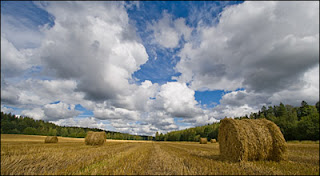Photo by Rafiq Iskandar
Photo by Noboyuki Taguchi
Photo by Robin Anne
Here are images from other photographers using different methods of distortion made with either the lens or added in photoshop. The first image is a thing called "little planet". It is a 360 degree panorama that is stitched and edited in photoshop. With a special stitching effect, it makes a complete circle that makes it look like a small "planet". The second image was taken with a fisheye lens. This is really neat, because it makes straight, solid lines curved. It makes the building look like it is turning inside towards itself. The third image was edited in photoshop, most like with the liquify filter. This ones is neat because it makes straight lines take shape into funky lines and distortions. It takes a normal looking street and turns it into a new, abstract place.
















































